Table of contents
Introduction of the DNA Model
The structure of a DNA model is an interesting one. The double-helical shape reminiscent of a twisting ladder can be recognized by many people outside of the scientific professions. Designers and engineers from all around the world have even been inspired by the shape to design various structures, including the Evolution Tower in Moscow Russia and various statues and stairways.

The first accurate DNA double helix structure model was unveiled in 1962 and credited to two scientists, James Watson and Francis Crick. Their work was based on the x-ray crystallography structures collected and analyzed by another scientist, Rosalind Franklin.
This article takes us through the structure of a DNA molecule and the history behind the discovery of this structure.
The Structure of the DNA Model
Each DNA single strand comprises three parts:
- sugar molecules
- phosphate groups
- nitrogen containing base pairs
DNA molecules have two strands that coil around an axis, forming a twisted ladder shape, commonly known as a double helix. The rungs on the ladder are the nitrogenous base pairs connected by a hydrogen bond (bases adenine and thymine or guanine and cytosine) while the sides are alternating sugar molecules and phosphate groups bonded together. The sides are commonly known as the sugar phosphate backbone. You can get a feel for how the two strands are woven together by twisting two pipe cleaners.
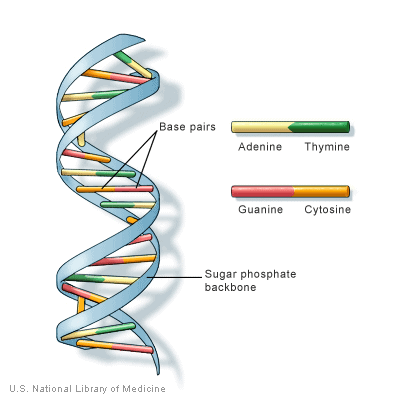
The Discovery of the DNA Model
Scientists James Watson and Francis Crick are often credited to have discovered the DNA model in the 1950s. However, the first identification of DNA was actually made in 1869 by Frederich Miescher, a Swiss scientist. Later research by Russian scientist Phoebus Levene and Austrian Erwin Chargaff served to unearth more information about the DNA molecule.
Then, Rosalind Franklin and Maurice Wilkins produced the x-ray crystallography photographs ultimately used by Watson and Crick to crack the genetic code. Ultimately, Maurice Wilkins shared the 1962 Nobel Prize in physiology or medicine with James Watson and Francis Crick but is not given as much of the credit. In truth, it is much of Rosalind Franklin’s work that led to the discovery of the DNA model. However, she passed away before the 1962 prize and Nobel prizes are not awarded posthumously.
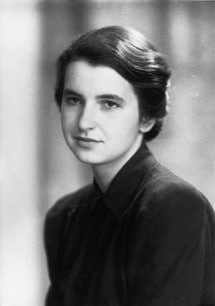
The work done by these earlier scientists formed the foundation for the discovery of the double helix structure of the DNA molecule by Watson and Crick.
Frederich Miescher’s work on DNA
The chemist, Frederich Miescher, discovered DNA, although he first called it a nuclein. This later became known as nucleic acid and then, later on, deoxyribonucleic acid as more was learned about the molecule. Shortened to DNA, the abbreviation is most widely known today.
Interestingly, Miescher wasn’t trying to discover DNA. He was trying to identify the proteins that make up the white blood cells. During his experiments, he discovered a substance that was different from any other protein. This substance had an unusually high amount of phosphorus and was resistant to protein digestion.
Miescher, unfortunately, received very little recognition for his discovery. A lot of texts on the history of science in the nineteenth century failed to mention him completely.
Further study on the structure of the DNA model
Phoebus Levene conducted intensive investigations of the structure of the nuclein as it was known then. Levene did a lot of research and published many papers on the science of molecular biology. Among Levene’s many discoveries was the correct identification of how RNA and DNA molecules come together.
In Levene’s time, it wasn’t known how the different components of the DNA molecule were positioned. In 1919, Levene put forth a proposal of the makeup of nucleic acids. Levene proposed that nucleic acids were formed of nucleotides which formed a base containing nitrogen, a molecule of sugar, and a phosphate group. This representation proved to be accurate.
Levene’s work brought the knowledge of the composition of the nucleotides that form a DNA molecule. It also gave the knowledge that the nitrogen bases which make up nucleotides are of two major categories: purines which are of two types, adenine and guanine; and pyrimidines of three types (only two of these are found in DNA, cytosine, and thymine, while uracil is found only in RNA).
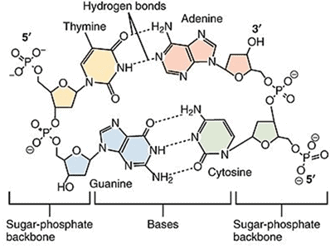
The rules of Erwin Chargaff
Other scientists expanded on the studies of Phoebus Levene on the structure of the DNA model. One of the most notable of these scientists is Erwin Chargaff. In 1944, a paper was published by scientists at Rockefeller University highlighting that genes were made up of DNA. This sparked interest in Chargaff on the subject, resulting in extensive research on the subject of nucleic acids.
Chargaff’s first point of the research was to determine the variation of DNA in organisms of different species. To do this, he developed a method of chromatography for dissecting and classifying quantities of organic matter. Chargaff eventually came to two major conclusions.
The first is that the nucleotides bases, which make up DNA, have different arrangements across species—this deposed one of Levene’s proposals that the nucleotides were always arranged in a fixed pattern.
His second conclusion was that the DNA of organisms of all species share some particular characteristics. One of such characteristics is the relationship between the number of bases in DNA. For example, the amount of adenine is roughly equal to that of thymine, while the amount of guanine is approximately that of cytosine. This translates to an averagely equal quantity of purines and pyrimidines. These conclusions have come to be known as Chargaff’s rules. The works of Chargaff were instrumental to the later discoveries of James Watson and Francis Crick.
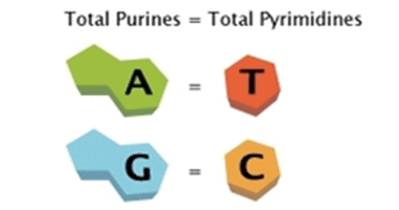
Watson and Crick and the double helix DNA model
The discovery of the double helix structure of DNA is most often attributed to James Watson and Francis Crick. Using Chargaff’s rules and the works of English scientists Rosaline Franklin and Maurice Wilkins, they built a 3D model of the double-helical structure of DNA.
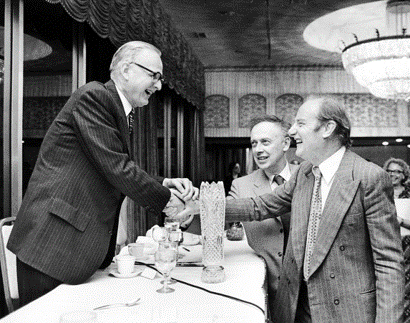
Linus Pauling’s (an American biochemist) technique for assembling 3D models using molecular span and angles of the bond was instrumental to Watson and Crick’s success. Unfortunately, although Pauling nearly beat them to the discovery, his model, which he unveiled a few months before theirs, was flawed.
By analyzing the results of Franklin’s X-ray crystallography, Watson and Crick got vital indications of DNA structure. This crystallography technique uses x-rays to form a diffraction pattern which indicates a molecule’s structure. This technique was used to examine a DNA molecule, and it produced an X-shaped diffraction image which suggested to Watson and Crick that DNA had a two-stranded helical structure.
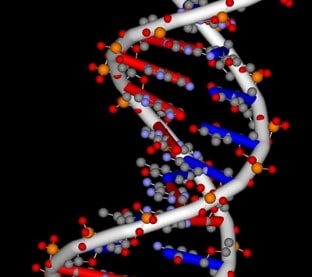
Watson and Crick’s DNA model
Since the unveiling of Watson and Crick’s DNA model in 1953, several scientists have polished and expounded on it. The key features, however, remain the same. These features are:
- The structure of DNA is a double-stranded helix. The strands are bound with hydrogen bonds. Adenine bases are always joined with thymine bases, and cytosine bases are always joined with guanine bases. This is in accordance with Chargaff’s rules.
- The DNA double helix is right-handed. This means if you stick your right hand out with your thumb pointing upwards and keep your fingers curled, your thumb would be the axis around which the helix is coiled, while your fingers would be the sugar-phosphate backbone.
- The two strands that make up double-helical DNA face opposite directions. The phosphate carrying the end of one strand evens up with the hydroxyl carrying the end of the other strand and vice versa.
- While a hydrogen bond links the base pairs inside the ladder, the exposed outer edges are important for binding other molecules such as proteins for DNA maintenance.
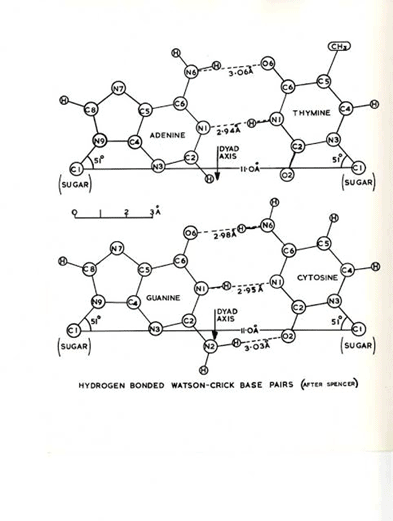
Refinements to Watson and Crick’s model
Scientists have made notable improvements to the earlier model of DNA. One of such is the establishment of different variants of the DNA structure. The most popular of these variants is depicted by Watson and Crick’s model and is called B-DNA. The two other variants are A-DNA and Z-DNA.
A-DNA is seldom seen under standard conditions and is shorter and broader than B-DNA. Z-DNA, on the other hand, features a left-handed helix. Z-DNA exists as a response to specific biological activities. For example, Z-DNA is suspected to be important in protecting organisms against viral attacks.
Nebula Genomics
Thanks to the discovery of the structure of the DNA model, we have a better understanding of the functions of DNA. Since its discovery, many advancements have been made in the fields of genetic sequencing and engineering. We can now read an entire human’s genome (first completed in the Human Genome Project in 2003).
Now, with commercial genetic testing, we can screen for genetic risks of everything from traits to diseases at an affordable price and accessible from your home.

Whole-genome sequencing can be useful for learning about your well-being and genealogy. Nebula Genomics is dedicated to bringing accessible, personalized whole-genome sequencing to everyone.
At Nebula Genomics, unlike other genomics companies, we read the full length of your full genome, a total of about 6 million positions. These positions are then read 30 times, giving you some of the highest accuracies you can hope for. This means that our sequencing tests read 10,000 times more DNA bases than other DNA testing companies.
At Nebula Genomics, your test results are available for you to review, with a tool that allows you to examine your genetic data from any angle. Furthermore, since your entire genome is sequenced, you are not limited in the research you can carry out with your data.
Your data can also be used to trace your ancestry with Nebula Genomics having access to the largest chromosome databases in the world.
Order your whole genome sequencing test today!
Want more information on DNA? Check out these other articles:
- What does DNA stand for? Learn more about this important molecule!
September 3, 2021
